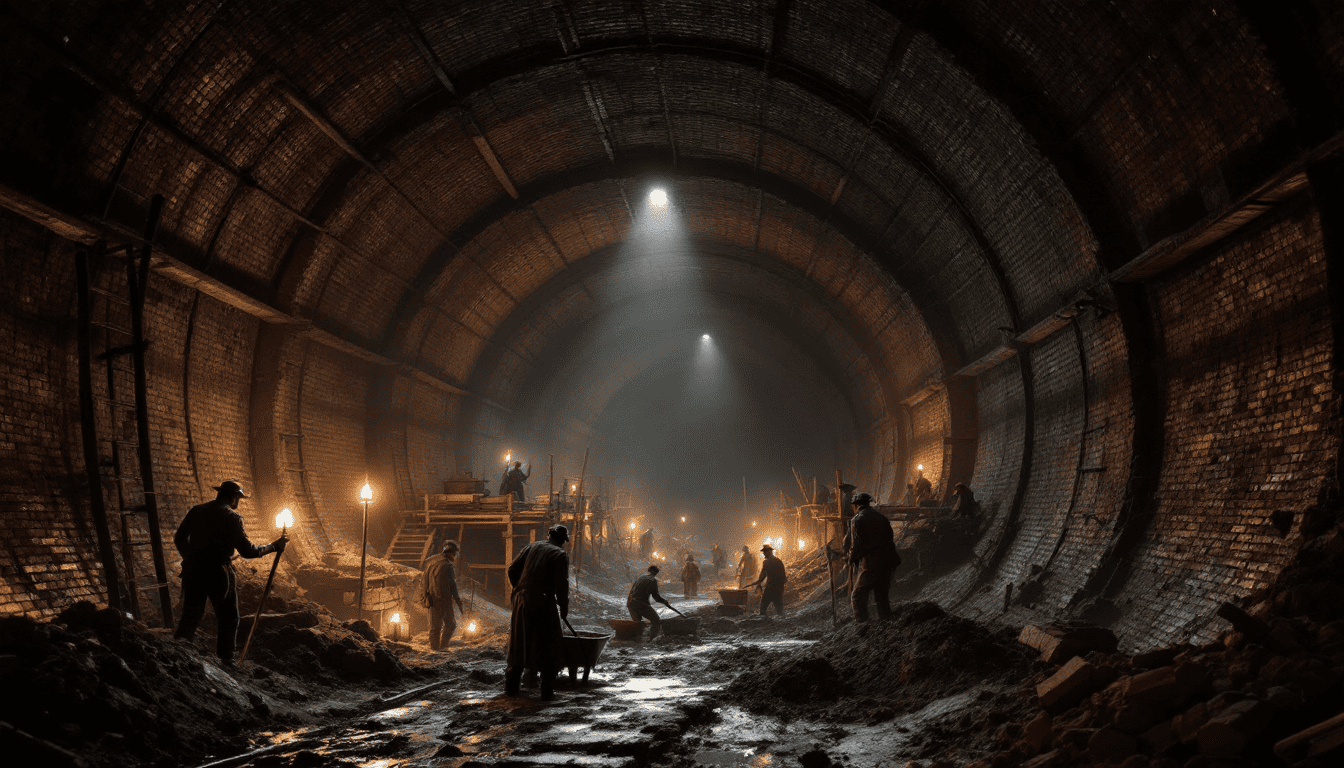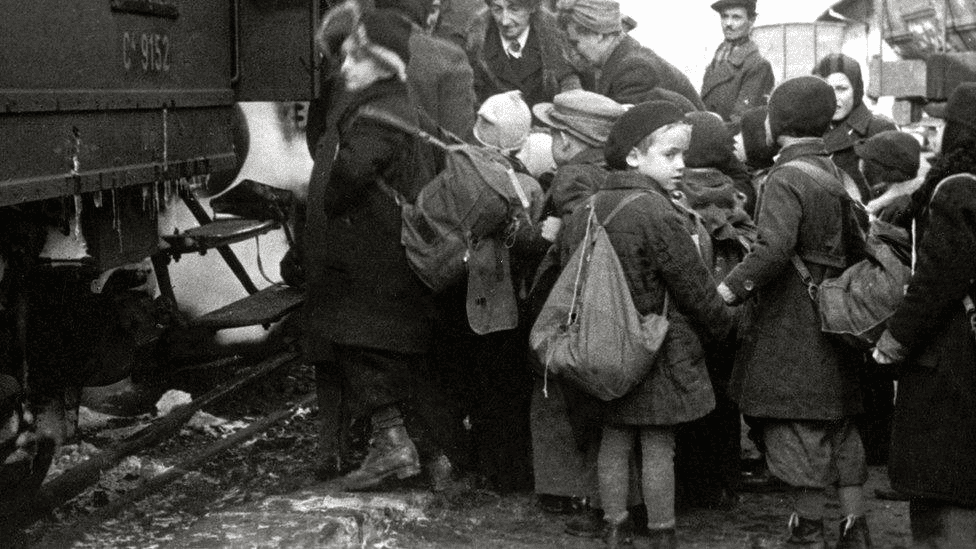How The "Great Stink" Of London Sewage Created Modern Sanitation
When Parliament fled Westminster in 1858, gagging on Thames sewage, Joseph Bazalgette built sewers saving millions of lives. Today two billion people still lack sanitation, facing Victorian London's horrors while we ignore the unfinished sanitation revolution.

Summer 1858: Parliament abandons its sittings. Members of the House of Commons flee the building, handkerchiefs pressed to their faces, gagging on the stench rising from the Thames. Curtains soaked in chloride of lime hang at the windows in a futile attempt to block the smell. Benjamin Disraeli, leading a debate on a local governance bill, cannot continue. The reek is unbearable.
London's river had become an open sewer, and under the June heat, it fought back.
Before the Deluge
Two million people crammed into London by mid-century. Every one of them produced waste. Most homes relied on cesspits—brick-lined holes in the ground where human waste accumulated. When full, night soil men arrived after dark, shovelling the contents into carts. The better-off paid for this service. The poor simply let their cesspits overflow into streets, courtyards, cellars.
Flush toilets, introduced to wealthier homes in the early 1800s, made everything worse. A cesspit might fill in a few years when fed by a family emptying chamber pots. Connect a water closet, add gallons of flush water daily, and it filled in months. Then weeks. The volume overwhelmed the old infrastructure completely.
Property owners took the obvious step: they broke holes in cesspit walls, letting liquid waste drain into whatever lay beyond. Ancient brick sewers, some dating to medieval times, ran beneath many streets—built to carry rainwater to the Thames. Into these, sewage now poured. Hundreds of pipes, legal and illegal, gushed filth directly into the river.
The Thames flowed tidal through London. Sewage ejected at low tide sat on the mudflats, baking in summer heat, freezing in winter, stirred twice daily by the incoming tide. High tide brought it back upstream. The river had become a slowly oscillating cesspool, forty miles long.
People drew their drinking water from the Thames.
Death on the Current
Cholera arrived in 1831. The disease had never before reached Britain, confined historically to India. Global shipping changed this. The first epidemic killed more than 50,000 people across the British Isles. London suffered repeated outbreaks—1831-32, 1848-49, 1853-54, 1866. Each wave killed thousands.
Dr John Snow, working in Soho during the 1854 outbreak, traced cases to a single pump on Broad Street. He mapped deaths, showed the pattern, removed the pump handle. Deaths dropped. He demonstrated cholera spread through contaminated water, not bad air. Almost nobody believed him.
Miasma theory dominated medical thinking. Disease arose from foul odours, from the "bad air" of swamps and sewers. The theory seemed obvious—wherever sewage rotted and stank, people fell ill. The correlation looked perfect. Causation, medical authorities assumed, ran from smell to sickness.
This misconception proved useful: miasma theory might have been wrong, but it prompted the same solution as germ theory would have: get the filth away from people. If you believe bad smells cause disease, you build sewers. The reasoning was incorrect; the infrastructure was sound.
Typhoid, dysentery, and other waterborne diseases ravaged Victorian London alongside cholera. Infant mortality in poor districts reached 25 per cent. Life expectancy in the East End barely touched forty years. Walk through certain neighbourhoods and the smell of human waste hung permanently in the air, seeping from cellars, rising from gutters, drifting off the river.
Parliament Holds Its Nose
The wealthy lived upwind and upstream. Chelsea and Westminster enjoyed slightly cleaner conditions than Southwark and Bermondsey. Money bought distance from the worst horrors. It could not buy immunity.
Prince Albert died of typhoid in 1861, aged 42. The Queen's Consort had access to the best medical care in the Empire. Didn't matter. The disease killed royalty and paupers alike, though it killed far more paupers. Sanitation failures became a class leveller—unpleasant for the rich, catastrophic for the poor.
June 1858 forced action. London baked under unusual heat. The Thames shrank, exposing vast expanses of sewage-caked mud. The smell penetrated everywhere. MPs considered relocating Parliament to Oxford or St Albans. Gentlemen walking along the Embankment vomited in the street. Boats on the Thames stopped running—watermen refused to work.
Parliament passed the Metropolitan Drainage Bill in eighteen days. Eighteen days. Bills usually took years. The Great Stink concentrated minds wonderfully.
Bazalgette's Incredible Vision
Joseph Bazalgette, chief engineer of the Metropolitan Board of Works, had been planning for this moment. Born in 1819 to a naval family, he trained as a civil engineer and worked on railway drainage projects. In 1856, the Board appointed him to solve London's sewage crisis. He began designing immediately.
His solution was audacious: intercept sewage before it reached the Thames, redirect it through massive underground tunnels, pump it east beyond the city, release it far downstream on the outgoing tide. Move the problem away from people. The engineering challenges were immense.
London sits in a basin. The Thames flows west to east, but ground slopes inward from all sides. Bazalgette needed his sewers to flow by gravity—pumping millions of gallons daily was impossible with 1850s technology. He planned three main tunnels north of the river, two south, running parallel to the Thames but set back from it, each sloping gently eastward.
Smaller sewers, thousands of them, would feed into the main tunnels. Everything needed precise gradients. Too steep and the flow would erode the pipes; too shallow and solid waste would settle and block them. He calculated slopes of two feet per mile for the main sewers—barely perceptible, but enough.
The mathematics were punishing. Bazalgette had to account for population growth decades ahead, estimate peak flow during storms when rainwater joined sewage in the pipes, calculate structural loads from the weight of London's streets and buildings above. He needed his tunnels to last generations.
He doubled his estimates. Critics called it wasteful. His sewers could handle twice the flow calculations suggested they needed. "Well, we're only going to do this once," he reportedly said, "and there's always the unforeseen." By 2024, London's population had grown to nine million.
The sewers still work.
Building the Labyrinth
Construction began in 1859. The scale was staggering. Contractors excavated 2.5 million cubic yards of earth. Navvies—the itinerant labourers who'd built Britain's canals and railways—descended into trenches 20 feet deep, shoring timber walls while bricklayers constructed the tunnels around them.
London's clay proved ideal for tunnelling. Waterproof, stable, easy to excavate. Where tunnels ran beneath streets, crews worked behind wooden shields, removing clay, installing brickwork, advancing foot by foot. Where routes crossed open ground, they dug open trenches, built the sewers, backfilled.
Three hundred and eighteen million bricks went into the tunnels. Eighty-three miles of main sewers, connecting to over 1,000 miles of smaller street sewers. Bazalgette coordinated thousands of workers across dozens of sites simultaneously. The logistics rivalled a military campaign.
Four pumping stations lifted sewage from low-lying areas. At Abbey Mills in the Lea Valley, engineers installed eight beam engines, each with a 47-ton flywheel. The building housing them resembled a Byzantine cathedral—ornate ironwork, Moorish arches, decorative brickwork. Victorian engineers built beauty into their infrastructure.
Outfalls at Beckton north of the river and Crossness to the south would discharge sewage at low tide. Bazalgette designed these as temporary—he envisioned treatment works processing the sewage before release. Parliament, economising, ordered him to discharge it untreated. Downstream populations protested. Didn't matter. Raw sewage poured into the Thames at the outfalls for decades.
Construction took sixteen years. Cholera struck again in 1866, killing 5,600 in East London. The incomplete sewer network couldn't yet serve those districts. The outbreak provided grim proof of the system's necessity. Where sewers operated, cholera didn't spread.
The River Reborn
By 1875, the system was largely complete. Deaths from cholera, typhoid, and dysentery plummeted. Salmon, absent from the Thames for decades, returned. The river still smelled—industrial effluent and the outfalls downstream saw to this—but the existential horror had lifted.
Bazalgette's work extended beyond sewers. He oversaw construction of the Thames Embankment, reclaiming 37 acres from the river, creating new roads and public gardens while housing the main sewer tunnels beneath. He standardised street improvements across London, ensuring all new roads included proper drainage. He built three new bridges—Putney, Battersea, Hammersmith.
The sewer system cost £6.5 million, roughly £700 million in today's money. For context, Britain's entire annual government expenditure in 1860 ran to about £70 million. The project consumed a significant fraction of the national budget. Parliament authorised it anyway, spooked by the Great Stink, increasingly convinced by evidence linking sewage to disease.
Other cities watched and learned. Hamburg built sewers after a cholera outbreak in 1892 killed 8,600 people. Paris expanded its system. Berlin, Vienna, New York—every growing industrial city faced the same crisis. Most copied elements of London's solution: interceptor sewers, gravity flow where possible, pumping where necessary, treatment works eventually added.
The Forgotten Revolution
We take clean water for granted now. Turn a tap, safe water flows. Use a toilet, waste vanishes. The infrastructure hiding beneath streets remains invisible until it fails. A sewer pipe bursts, and suddenly we remember how thin the barrier between civilisation and filth actually is.
London's sewers changed human history more profoundly than most military victories or political revolutions. Before Bazalgette, half of children born in working-class districts died before age five. After sewers and clean water, infant mortality collapsed. Life expectancy soared. Cities became places where population could grow naturally, through births exceeding deaths, rather than requiring constant influx from the countryside to offset disease losses.
Public health infrastructure enabled everything else. You cannot industrialise without concentrating workers in cities. You cannot concentrate populations without sanitation. Every factory, every office block, every transport network depends on invisible systems carrying waste away. Remove sewers and modern urban life collapses within days.
The engineering challenges Bazalgette solved seem almost quaint now. GPS and computers make surveying trivial. Tunnel boring machines excavate far faster than Victorian navvies. Modern materials outlast brick. Yet the fundamental principles haven't changed. Sewage still flows downhill. Pumps still lift it where necessary. The laws of physics haven't been repealed.
What changed was our collective will to build infrastructure and let specialist engineers do it.
Pre-1858, private companies supplied water for profit, serving customers who could pay. The wealthy bought sewage removal services; the poor didn't. Disease ignored class boundaries in the end, but wealth delayed infection. The Great Stink demonstrated this approach failed—even if you could protect yourself individually, you couldn't protect yourself while living in a city with inadequate sanitation.
Why We Call It The Modern World
Two billion people lack access to safely managed sanitation services today. They use pit latrines, open defecation sites, or nothing at all. Cities in South Asia and sub-Saharan Africa face the same crisis Victorian London endured. Perhaps worse—London's two million produced less waste per capita than modern urban populations, lacked plastic refuse, didn't use synthetic chemicals.
Dhaka, Bangladesh. Population: ten million. The city has no comprehensive sewer network. Most homes empty into septic tanks or simple pits. During monsoon rains, these overflow into streets and waterways. Cholera outbreaks still occur. Dysentery is endemic. Children die of preventable diseases.
Mumbai, Lagos, Karachi, Kinshasa—megacities housing tens of millions, many without proper sanitation infrastructure. The engineering solutions exist. Bazalgette proved this 150 years ago. Money and political will are lacking.
Installing sewers costs billions. Governments in developing nations face impossible choices: build sewers or build hospitals? Schools or sanitation? Roads or sewerage treatment? External development funding rarely prioritises unglamorous infrastructure. Donors prefer hospitals and schools—visible projects with ribbon-cutting ceremonies. Nobody celebrates a sewer tunnel.
Yet sewers prevent more disease than hospitals treat. Clean water and sanitation contributed more to increasing human lifespan than all medical advances of the 20th century combined. Antibiotics, vaccines, surgery—all mattered less than getting human waste away from drinking water.
Modern sanitation engineering offers solutions Victorian engineers couldn't imagine. Decentralised treatment systems, composting toilets, biogas digesters turning waste into fuel, advanced filtration producing drinking water from sewage. These technologies work in situations where Bazalgette's approach—massive centralised infrastructure requiring stable government and sustained investment—proves unworkable.
The challenge isn't technical. We know how to do this. The challenge is political and economic. How do you fund infrastructure with century-long payback periods in countries with unstable governments? How do you maintain complex systems requiring trained operators where educational infrastructure barely functions? How do you convince populations using pit latrines that paying for invisible pipes represents good value?
The Measure of Civilisation
Bazalgette died in 1891, knighted and celebrated. His sewers earned him a memorial on the Embankment—a small plaque most people walk past without noticing. Perhaps appropriate. The infrastructure serving us best remains invisible, unnoticed, taken entirely for granted until it fails.
London's sewers still function 150 years later, moving waste for nine million people, mostly through the same brick tunnels Bazalgette built. Engineers have added capacity, upgraded pumping stations, built new treatment works. The core system endures. Few structures humans build last so long while remaining useful.
The Great Stink forced Parliament to act. Only when MPs personally suffered the consequences of inadequate sanitation—when the smell invaded their chambers and made governance impossible—did they authorise spending on the scale required. The poor had suffered for decades. Nobody cared until the problem reached Westminster.
This remains the pattern. Infrastructure gets built when failure becomes intolerable to people with power. The two billion lacking sanitation today have no voice in global forums, no votes in wealthy legislatures, no ability to force action. Their children die of preventable diseases while the developed world debates whether spending a fraction of our military budgets on sanitation aid represents good value.
Bazalgette's sewers prove we can solve these problems.
We've known how for a century and a half. What we lack isn't engineering knowledge. We lack the Great Stink—the immediate, unavoidable, personally unpleasant crisis forcing those with resources to act.
Perhaps we need to remember what London smelled like in June 1858. Parliament couldn't ignore the Thames stench. We shouldn't ignore two billion people living without sanitation. The engineering solutions exist. The mortality statistics demand action. Only the political will needs building.
Modern civilisation rests on Victorian sewers. Quite literally—our cities stand above infrastructure built generations ago. We owe debts to engineers whose names we've forgotten, whose work we never see, whose tunnels carry our waste silently and efficiently every day. Bazalgette's legacy flows beneath London still, invisible and essential.
The measure of any civilisation is how it treats its most vulnerable. Also, more prosaically, how it handles sewage. These aren't separate questions. They're the same question. Until everyone has access to the infrastructure we take for granted, the revolution Bazalgette started remains unfinished.
The Great Stink taught Victorians a lesson we keep forgetting: public health is public. Individual wealth cannot protect you from collective failures of sanitation. Either we solve these problems for everyone, or we solve them for nobody. Sewers are socialist infrastructure—expensive, invisible, universal, and absolutely essential.
London learned this in 1858, when the Thames finally became too foul to ignore. Like our politics today, right now.




